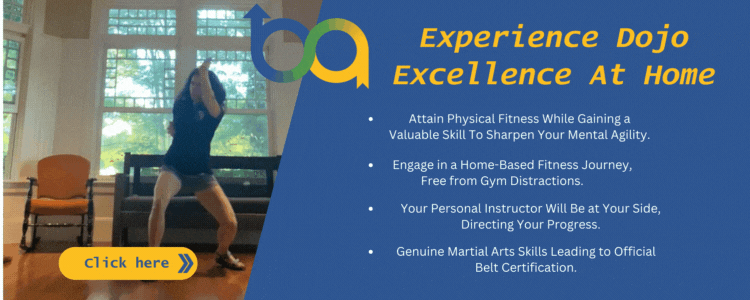 “What does it mean to be an advocate?” It’s a question that truly resonates in today’s world, where the voices of the marginalized and underserved need our recognition and support. Advocacy is more than just a word; it’s a call to action, a commitment to lifting the voices of those who are often silenced or overlooked.
“What does it mean to be an advocate?” It’s a question that truly resonates in today’s world, where the voices of the marginalized and underserved need our recognition and support. Advocacy is more than just a word; it’s a call to action, a commitment to lifting the voices of those who are often silenced or overlooked.
To understand what it means to become an advocate, we must explore the multifaceted nature of the term and its profound impact on communities around the globe. Advocacy can range from championing the rights of individuals with special needs to standing up for survivors of domestic violence. It can mean advocating for foster care reform to fighting for equal employment opportunities for all. Because advocacy takes many forms and serves many purposes even beyond these few examples, it’s important to understand how it builds and evolves.
To put it simply, advocacy is about empowerment. It’s about lifting others up, giving them a space to speak their truths, and working tirelessly to dismantle the systems, environment, and circumstances that hold them back. It’s about recognizing that everyone deserves to be seen, heard, and valued, regardless of their background or circumstances.
Understanding the challenges that many marginalized communities face is the first step toward meaningful action and lasting change through advocacy. By actively seeking out systemic barriers and injustices, we can gain insight into the complexities of their experiences and identify areas where advocacy efforts are most needed.
Identifying the Need
Advocacy is rooted in the simplest concept of “taking a stand”. In embracing the role of advocate, you extend your empathy beyond those within your immediate circle to encompass individuals whose paths you’ve never crossed.
Being an advocate means recognizing some of the specific challenges that underserved communities and individuals face. For example, many individuals in the autism community struggle with daily social challenges that neurotypical individuals do not encounter. From difficulty interpreting non-verbal cues to experiencing discrimination within social circles, people with autism can encounter a myriad of hurdles that can cause diminished self-confidence as well as depression and anxiety (White-Gibson, 2022).
Kathy Wilcox, a participant in SPARK (a research study for those with autism), says that she has not only experienced harassment and mocking in her personal life from friends and family, but has also been verbally disciplined at work by strangers who believe that she isn’t “trying hard enough” and keeps her diagnosis secret to avoid prejudicial behavior (Sarris, 2022).
“A co-worker who knew about (my autism) diagnosis talked down to me and tried to take on some of my duties… apparently on the assumption that autism made me less able. There are things that are harder for me at work because I don’t pick up on all these [social] cues, but there are things I’m very, very good at,” Wilcox says.
 In a different perspective, survivors of domestic violence often face challenges that not only result in a lack of confidence, worthiness, and empowerment but can create difficult legal issues. These challenges are not only emotionally connected (like dealing with PTSD/trauma responses) but can be financially draining as well.
In a different perspective, survivors of domestic violence often face challenges that not only result in a lack of confidence, worthiness, and empowerment but can create difficult legal issues. These challenges are not only emotionally connected (like dealing with PTSD/trauma responses) but can be financially draining as well.
Hannah Rich, a legal support advocate for Domestic Violence Services at the nonprofit Total Action for Progress, states that domestic violence victims often fall through the cracks of the legal system because of what it requires for their protection and what resources they may or may not have available (Kennett, 2022).
For example, Rich says that a judge will only grant a protective order if the individual filing can prove there is probable reason for further violence/injury. Additionally, these orders only last two years so survivors must continue to face their abuser in court repeatedly until there is a permanent resolution – which many do not ever achieve (Kennett, 2022).
“You’re just retelling your story three or four times,” said Rich. “That’s just very traumatizing because instead of processing it and just kind of being done with it, it’s still lingering.”
Children that are caught within the foster care system experience a range of unique challenges as well. According to AACAP (American Academy of Child and Adolescent Psychiatry, 2018), foster care children often:
- Blame themselves and feel guilty about removal from their birth parents.
- Wish to return to birth parents even if they were abused by them.
- Feel unwanted if awaiting adoption for a long time.
- Feel helpless about multiple changes in foster parents over time.
- Have mixed emotions about attaching to foster parents.
- Feel insecure and uncertain about their future.
Foster parents experience their own set of circumstances that might be difficult for traditional families to understand:
- Understanding mixed feelings toward the child’s birth parents.
- Recognizing their difficulties in letting the child return to birth parents.
- Dealing with the complex needs (emotional, physical, etc.) of children in their care.
- Working with sponsoring social agencies.
- Finding needed support services in the community.
- Dealing with the child’s emotions and behavior following visits with birth parents.
These challenges range from physical to emotional as well as legal and even financial in some cases.
There’s a common thread here, though. While these are just a few examples from communities that we recognize are marginalized and need advocacy, there are ways that we can unite and advocate for their mental/emotional health, their safety, and their overall well-being and future.
Community Resources and Support
So, what are the steps to begin to advocate for those suffering in silence in our community?
Learning to become an advocate for anyone begins within ourselves. We must be knowledgeable and seek out information, we must learn the art of listening, and we must always be supportive in circumstances we ourselves haven’t experienced or maybe even understand.
Pathfinders for Autism (n.d.) highlights modeling advocacy behavior and reaching out to others – not only in your own communities but joining with those who may have a wider reach (corporations, nonprofits, legislators, etc.) While this is a website geared towards empowering those with autism, this advice is applicable across all the underserved individuals we’ve covered so far.
Advocate by Modeling: Everyone reading this blog has experienced some sort of modeling behavior. Whether you’ve said it as a parent or heard it yourself as a child, “…because I said so!” is more effective when we SHOW our children positive behavior and its rewards instead of just demanding it.
Modeling as an advocate means that we demonstrate to everyone that we will stand up for equal treatment – whether that means we interject verbally when we see mockery or bullying behavior or we work towards changing that environment within our community, we must DEMONSTRATE that we are committed to being an advocate.
Advocate in Your Own Backyard: Advocacy doesn’t have to only center around large-scale efforts and can extend beyond your own home. In addition to working towards demonstrating our personal commitment to standing up for those who need it most, we can address local community centers, schools, and faith-based organizations as well (Pathfinders for Autism, n.d.)
Engage in meaningful conversations with these groups and utilize a partnership to bring more attention to your cause. Create events that support marginalized communities, and advocate for change on a local level.
 Advocate for Systems Change: It may seem difficult to work towards changing things for the better on a legislative level, but it isn’t as impossible as it may seem.
Advocate for Systems Change: It may seem difficult to work towards changing things for the better on a legislative level, but it isn’t as impossible as it may seem.
Look within your local area and find out when the Board/Committee meets that’s discussing a topic or bill of interest to you (Pathfinders for Autism, n.d.).
Attend these meetings and listen/take notes. Many city council meetings or district meetings allow for public comment, so utilize this time to bring attention to your cause.
You might have enough time to even make a presentation, so research and prepare information that backs up what you’re addressing and share it.
You can also write letters to your local legislation, state legislation, and even federal legislation to bring a focus on what you’re advocating. Attend local events/rallies, and network with others who think like you.
Advocacy doesn’t happen in isolation; it requires a supportive network and access to resources that can amplify and spread our efforts. Whether it’s building a strong support system at home and modeling our advocacy to others or connecting with local organizations and leveraging community partnerships, we can become strong advocates and drive meaningful change within the communities that need it most.
Being an advocate means more than just speaking out, though—it means exemplifying the values of empathy, understanding, and action.
By modeling behavior that promotes equality and inclusivity, we set an example for others to follow, demonstrating that advocacy is not just a duty, but a privilege and more importantly, a responsibility. Through our involvement in our communities, whether through local organizations, schools, or legislative efforts, we can create tangible change that results in a ripple effect of empowerment and support for those who need it most.
Ultimately, advocacy is about standing up for what is right, amplifying the voices of the marginalized, and working towards a more just and equitable society. Remember that every action, no matter how small, has the power to make a difference. Together, let’s continue to advocate for those who need it most, striving to build a world where everyone is valued, respected, and given the opportunity to thrive.
References
American Academy of Child and Adolescent Psychiatry. (2018). Foster Care. Retrieved from https://www.aacap.org/AACAP/Families_and_Youth/Facts_for_Families/FFF-Guide/Foster-Care-064.aspx
Kennett, L. (2022). Domestic Violence Survivors Face Legal Challenges. WSLS News. Retrieved from https://www.wsls.com/news/local/2022/12/01/domestic-violence-survivors-face-legal-challenges/
Pathfinders for Autism (n.d.) How to Become an Advocate (You May Already Be One!) Retrieved from https://pathfindersforautism.org/articles/advocacy/how-to-become-an-advocate-you-may-already-be-one/
Sarris, M. (2022). The Stigma of Autism: When Everyone is Staring at You. SPARK. Retrieved from https://sparkforautism.org/discover_article/stigma-autism/
White-Gibson, Z. (2022). How Autism May Affect Social Skills. Psych Central. Retrieved from https://psychcentral.com/autism/autism-social-skills






